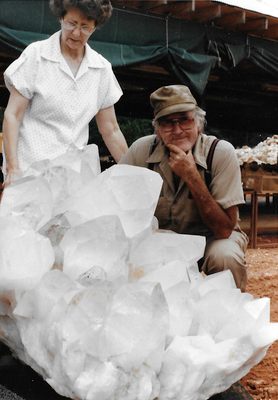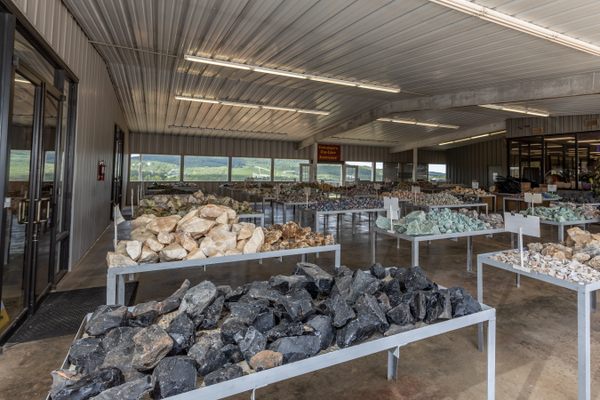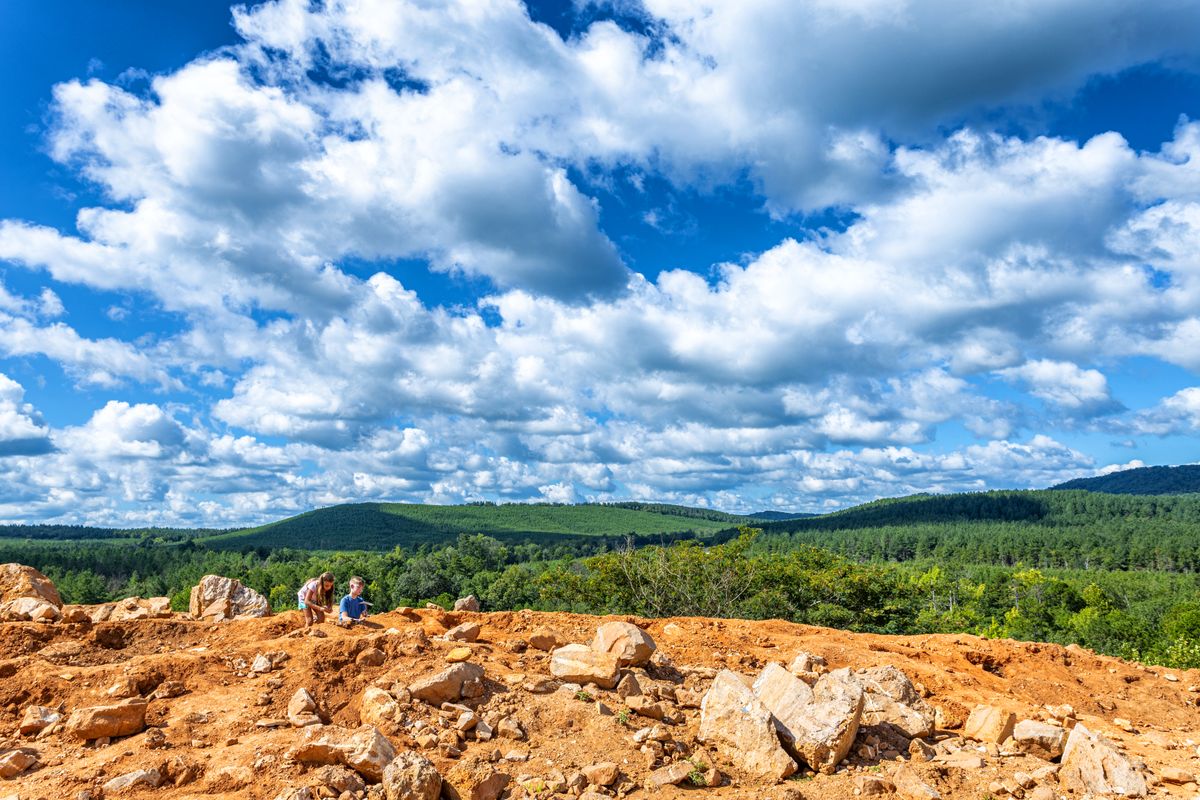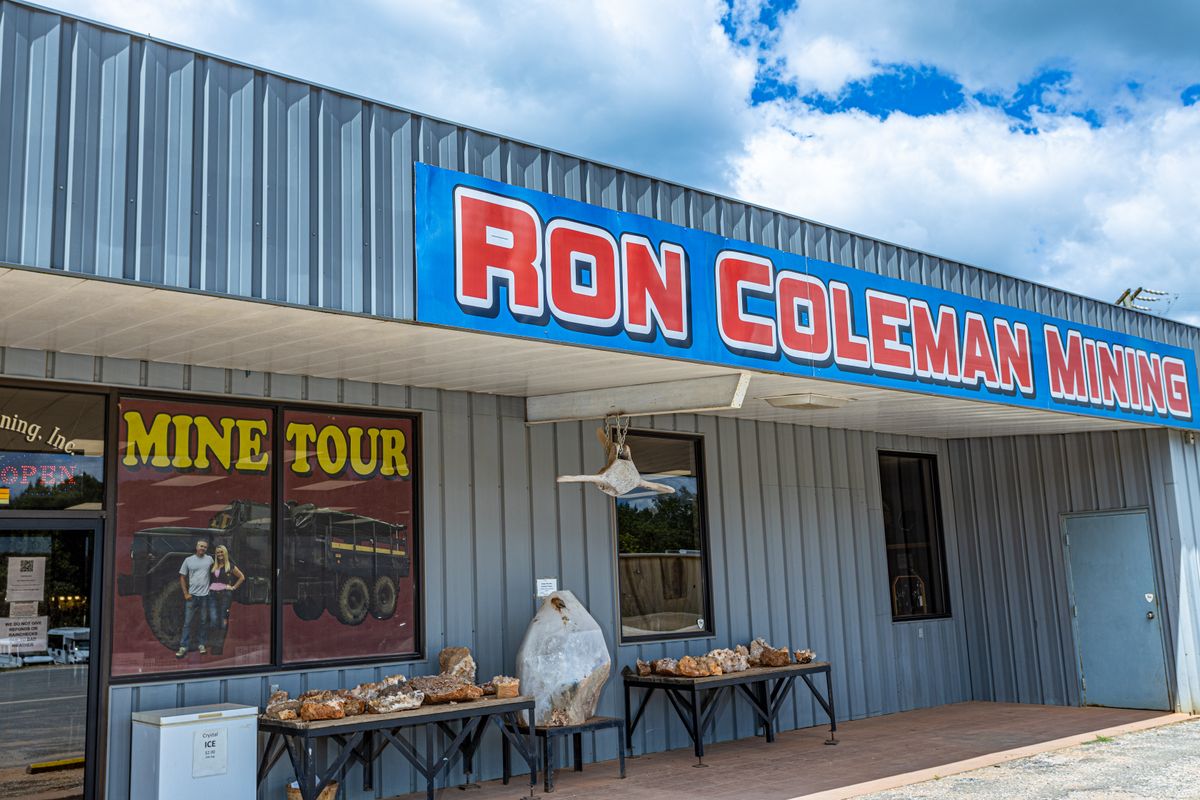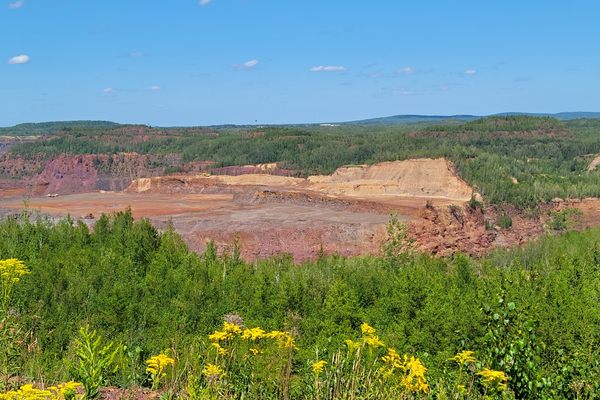About
There’s a picture of Ron Coleman and his son Josh in a 2018 Arkansas Democrat-Gazette article. It’s a nice photo of father and son, but the pair aren’t the subject of this picture. The two take a backseat to the eight-foot-long, 2,000-pound crystal they, as part of an excavating team, found in Coleman’s eponymous mine. Though it’s rare to stumble across something as spectacular as this beauty, which was valued at $3.5 million at the time, visitors to the mine can still try their hand at quartz prospecting. Located in Jessieville, about 20 miles from Hot Springs, the family-operated Ron Coleman Mine is an active commercial quartz mine that is open to the public.
The quartz veins in this area date back some 245 to 280 million years, all the way back when the Ouachita Mountains were forming. Today, this region is known as the “quartz belt,” because of a 30- to 40-mile wide and 170-mile-long band of the mineral. The largest deposits can be found in the Hot Springs area. Though there were reports of Indigenous people in the area using the crystals in tools as early as the 1500s, it wasn’t until the late 1800s that crystal mining became a big business. During World War II, there was a growing demand for quartz, which was used in radio equipment.
The Coleman mine was originally owned by a lumber company, but was taken over by the government as part of the war effort. Ron Coleman’s grandfather Charlie was one of the mine’s earliest employees. As one resident remembered, “He carried water for the miners who knocked off spectacular quartz clusters with hammers for radio oscillators.” Charlie was succeeded in the trade by his son Frank, and then by his grandsons, Ron and Jimmy. Though the Coleman family didn’t own the mine until 1987, it’s been called the Old Coleman Mine for over 50 years, a reflection of the family’s long mining heritage.
Today, visitors to the mine can dig for their own sparkling treasures. It’s a BYOS (bring your own shovel) operation, but digging through the freshly turned earth—the mine staff regularly brings fresh dirt to their digging area—can result in some impressive finds. These are the same crystals that are found in the commercial mine, but they’re often overlooked or not considered right for the retail or wholesale market. These are left in the dirt that’s brought to the digging area, just waiting for discovery.
If you’re not in the digging mood, Ron Coleman Mining also offers mine tours where visitors can learn more about the history of the mine and check out some of the many quartz crystals on display (some are even for sale). Especially adventurous visitors can see the mine from a whole new perspective—soaring above on the mine’s 100-foot-high, quarter-mile-long zipline.
Related Tags
Know Before You Go
Adult: $25, Senior: $20, Children (7-15) $5.00, 6 & under: Free (all persons in a church, scout or school group are required to pay $5 per activity). Zipline and mine tours are an additional fee, but packages are available.
Winter/Spring hours are 8 a.m. to 4:30 p.m., Summer/Fall hours are 8 a.m. to 5:30 p.m.Digging tools are not included in the admission price, but you can bring your own or purchase some from the gift shop. The mine operators suggest bringing a small ice chest, snacks, water, a hat, sunscreen, old clothes, old sneakers or boots, protective eyewear, heavy gloves, a five-gallon bucket, garden shovel, or cultivator.
Community Contributors
Added By
Published
March 6, 2024
Sources
- https://www.arkansasonline.com/news/2018/sep/25/photos-reddit-home-page-featured-35-million-chunk-/
- https://www.arkansasonline.com/news/2023/may/14/quartz-the-official-state-mineral-is-plentiful-in/
- https://www.hotsprings.org/blog/arkansas-quartz-can-you-dig-it/
- https://www.geology.arkansas.gov/docs/pdf/education/arkansas-quartz-crystals.pdf


